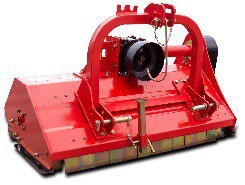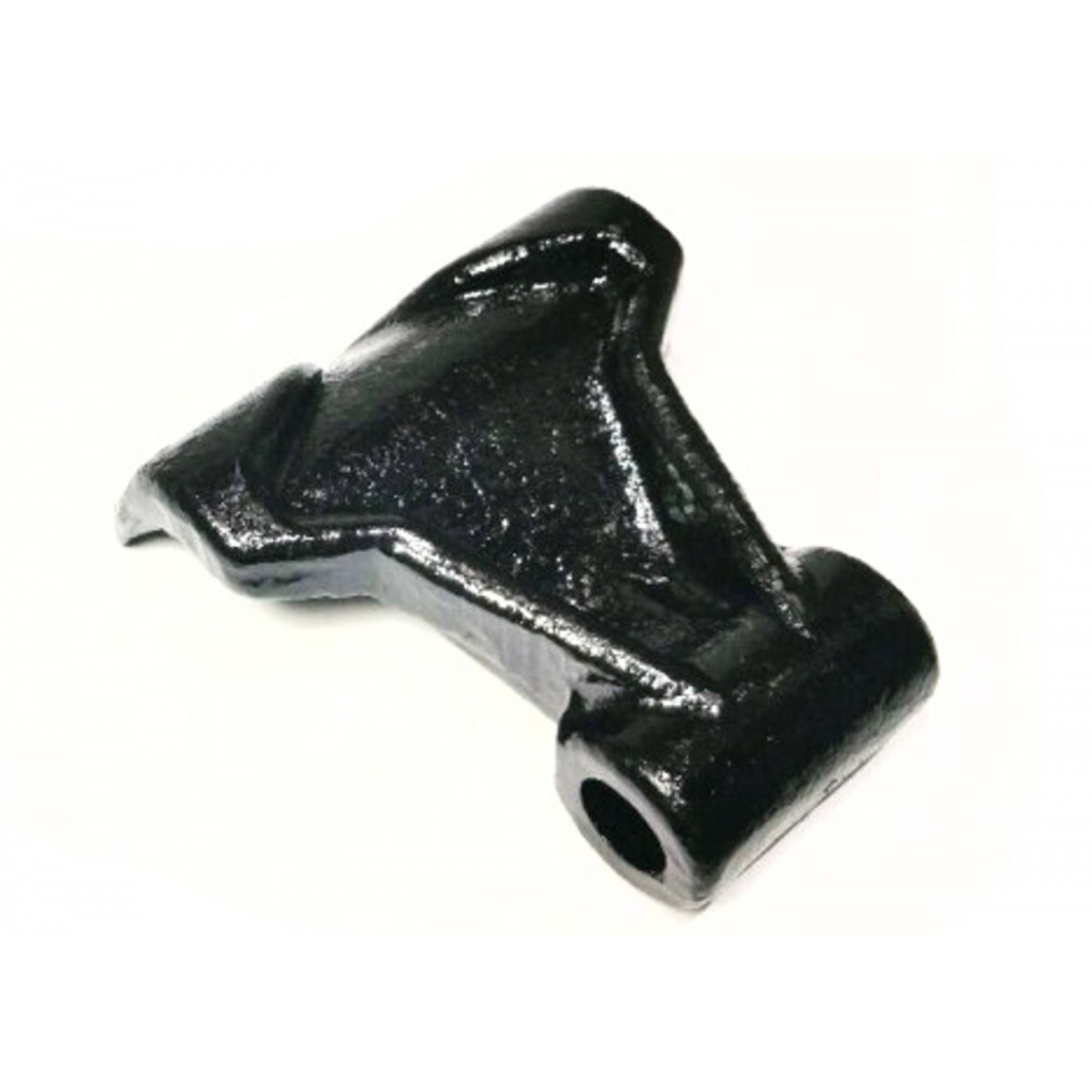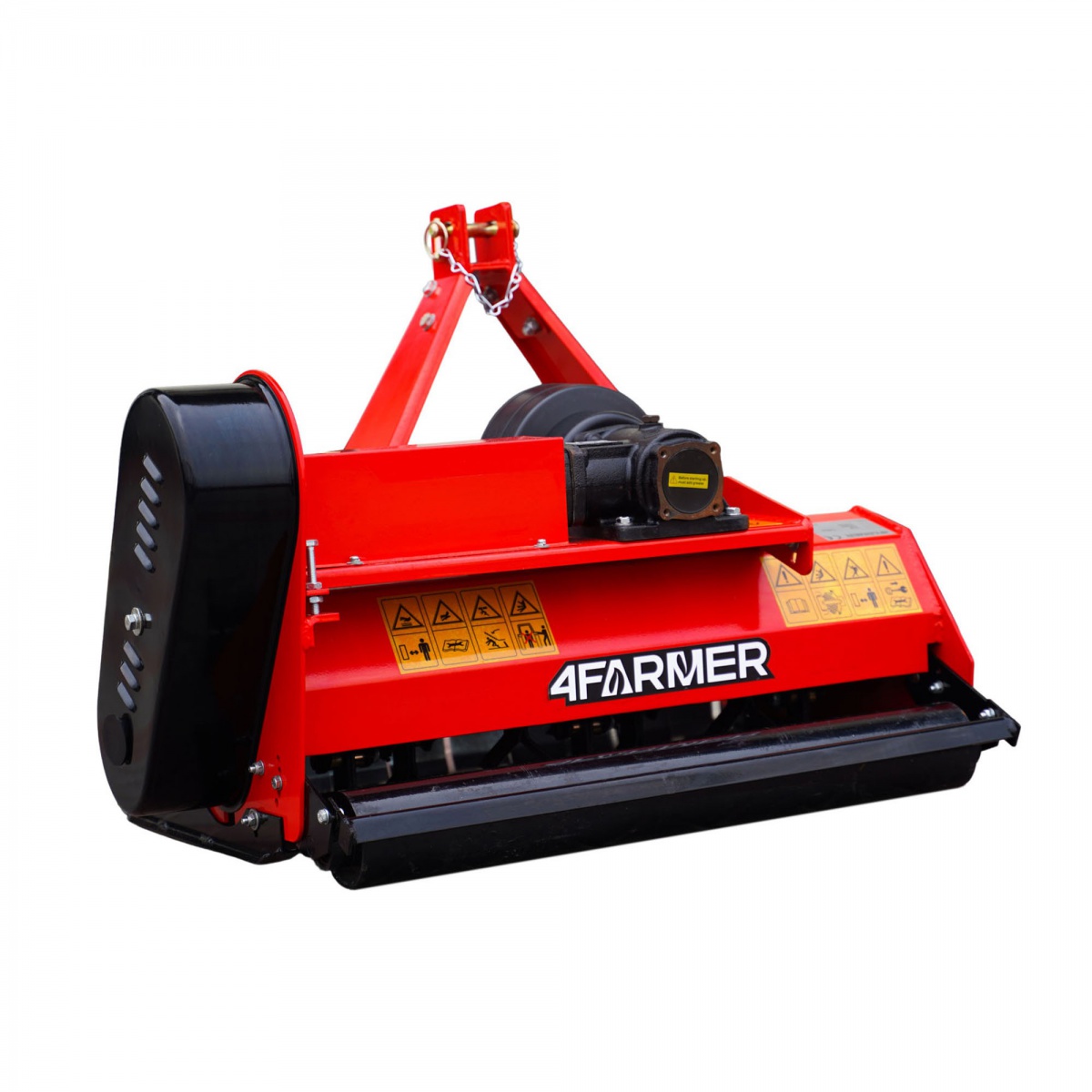Key parameters for flail mowers - from the power of the tractor to the type of flail. Adapting these parameters to your individual needs will ensure efficient and effective work!
Key specifications of flail mowers: What's worth knowing?
Flail mowers are robust and versatile machines that are widely used in both agricultural and landscape maintenance. Their distinctive design, consisting of a rotating shaft with flails, allows them to effectively cut dense vegetation, grass, shrubs or even small branches. When choosing the right flail mower, it is worth paying attention to the standard parameters that determine its performance and functionality.
1. Working width
One of the basic parameters of flail mowers is the working width. Depending on the model, the working width can range from 1.0 to as much as 3.0 metres. The choice of working width depends on the area you intend to mow - the larger the area, the wider the mower should be. The standard width for farm machinery is usually 1.5-2.5 metres.
2. Machine power
Flail mowers require sufficient tractor power to operate effectively. The power parameter of the machine usually depends on the working width and the number of flails. The average flail mower needs a tractor with 30 hp to 100 hp. Larger models may require even more powerful drive units. Selecting the right power ensures optimum working performance.
3. Number and type of flails
The flails are the key working element of the flail mower. The standard number of flails depends on the width of the shaft and can range from a dozen to several dozen flails per shaft. Tappers are available in a variety of shapes - the most popular are ‘Y’ type tappers and straight hammer tappers. The type of flail influences how the machine handles different types of vegetation - hammer flails are more effective at shredding harder materials such as branches.
4. Shaft speed
The speed of the flail shaft, expressed in revolutions per minute (RPM), is an important parameter that affects the effectiveness of the machine. Standard speeds range from 1,800 to 2,500 RPM. Higher rotational speeds allow for more thorough shredding of vegetation and a more even surface after mowing.
5. Machine weight
The weight of a flail mower is an important parameter, especially in terms of tractor compatibility. Lightweight models weigh from around 300 kg and heavier versions can exceed 1000 kg. More weight can affect stability when working on rough terrain, but also requires a stronger tractor.
6. Type of drive
Most flail mowers are driven by the tractor's power take-off (PTO). Standard models require a PTO speed of 540 RPM, but on some models it is possible to change the PTO speed to 1,000 RPM for more efficient operation.
7. Mowing height adjustment
Standard flail mowers offer cutting height adjustment, which allows the machine's operation to be adapted to different terrain conditions. The adjustment range is usually from 2 to 12 cm, allowing the cutting height to be accurately adapted to the type of vegetation.
Key specifications of flail mowers
When choosing a flail mower, standard parameters such as working width, tractor power, number and type of flails, shaft speed and machine weight are crucial. Adapting these parameters to your individual needs will ensure efficient and effective operation both in agriculture and in landscaping.
















